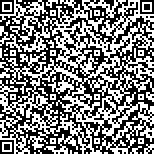下载中心
优秀审稿专家
优秀论文
相关链接
摘要

以城市3维结构场景为研究目标,考虑其光影遮蔽关系,模拟传感器视场内目标的可见表面,实现视场尺度内城市模拟目标方向亮温的准确模拟。利用地面试验观测数据对3 维热辐射方向性模型进行验证。结果表明,该模型对城市3 维结构目标的方向亮温具有较好的模拟精度,均方根误差为0.7 K,能够描述微观尺度下城市3维模拟目标的热辐射方向性。利用该热辐射方向性模型对城市区域物理模型的方向亮温进行模拟,发现城市区域物理模型热辐射存在显著的方向差异,并伴有热点效应产生。
A model is implemented to simulate the Directional Brightness Temperature (DBT) of three dimensional urban targets based on the computer graphics and the environment simulation algorithm. Using urban three dimensional scene, the model is able to calculate the surface cells seen by the sensor in a given Field of View(FOV) and the sunlit and shade patterns created by three dimensional urban surface structures. The DBT over urban areas is accurately simulated in the Instantaneous Field of View (IFOV). Model validation is conducted by comparing the simulated DBT with observed DBT, which demonstrates that the model has a high accuracy with the (Root Mean Square Error) RMSE of 0.7 K. The model can be used to describe the thermal anisotropy of urban targets at the micro-scale. The simulated results of DBT for scale model of urban targets reveal significant DBT variations for complex urban surfaces. The hot spot effect appears obviously in the upper hemispheric plot of DBT.

